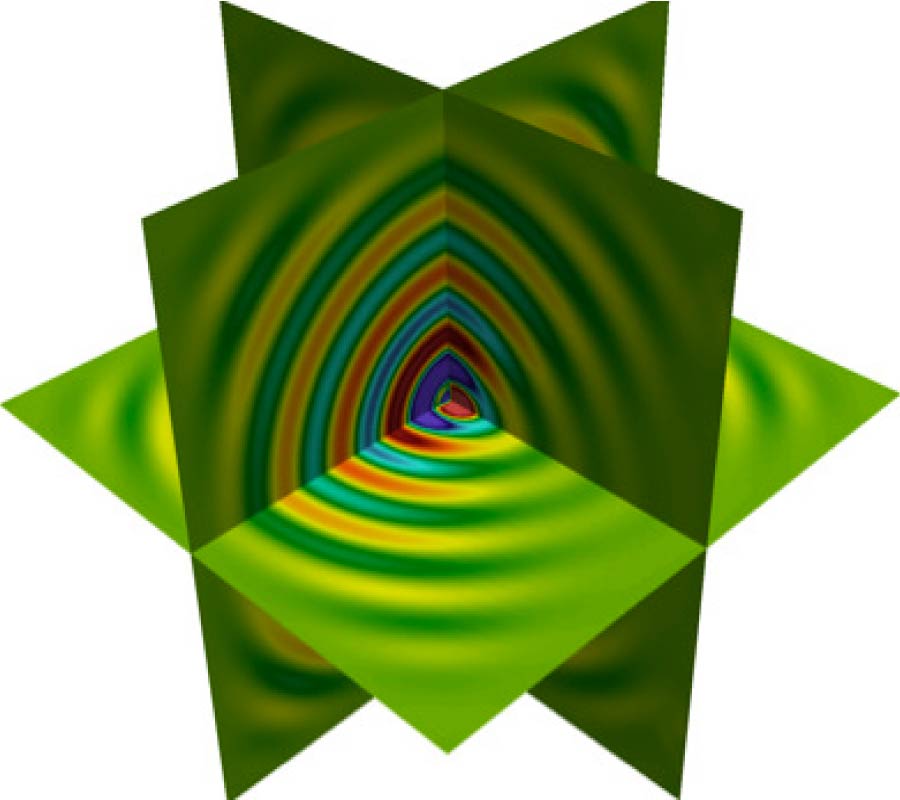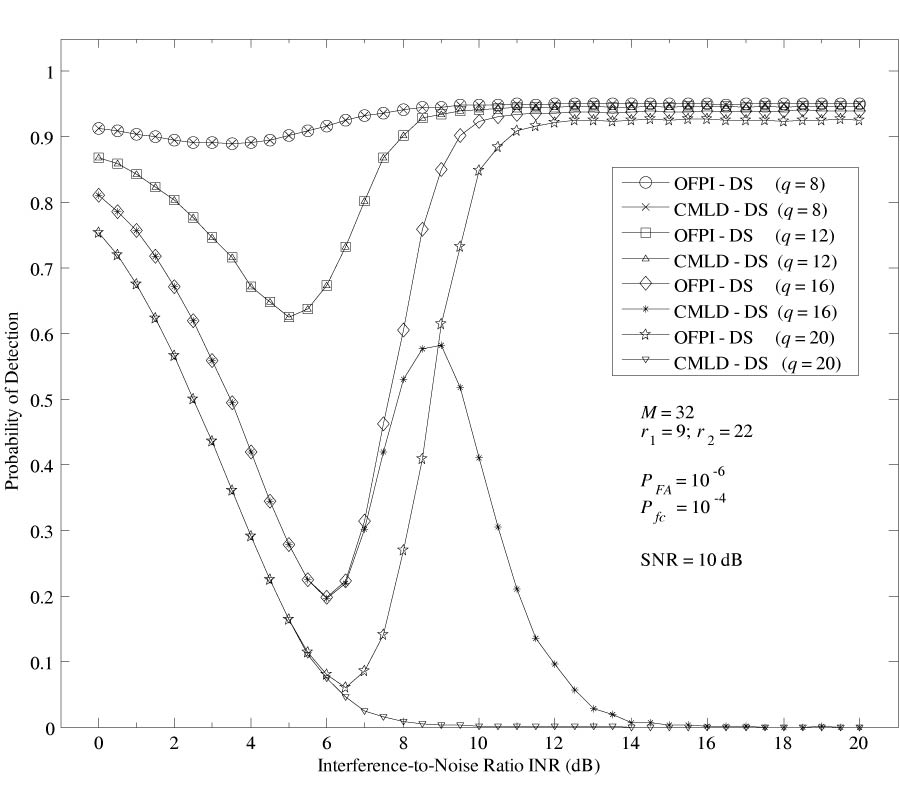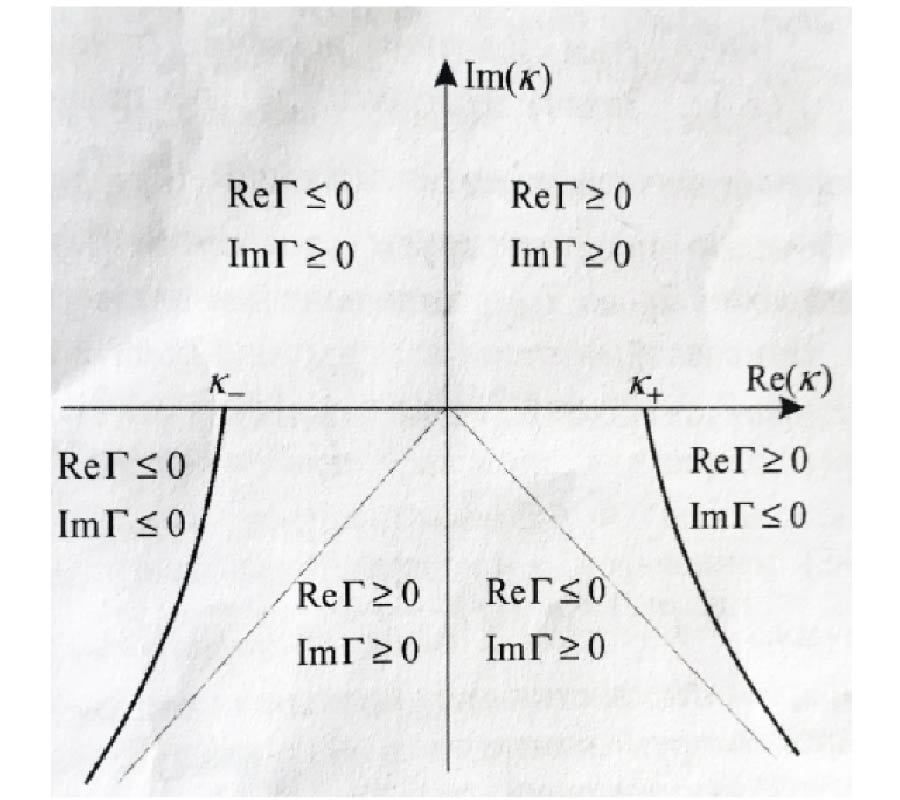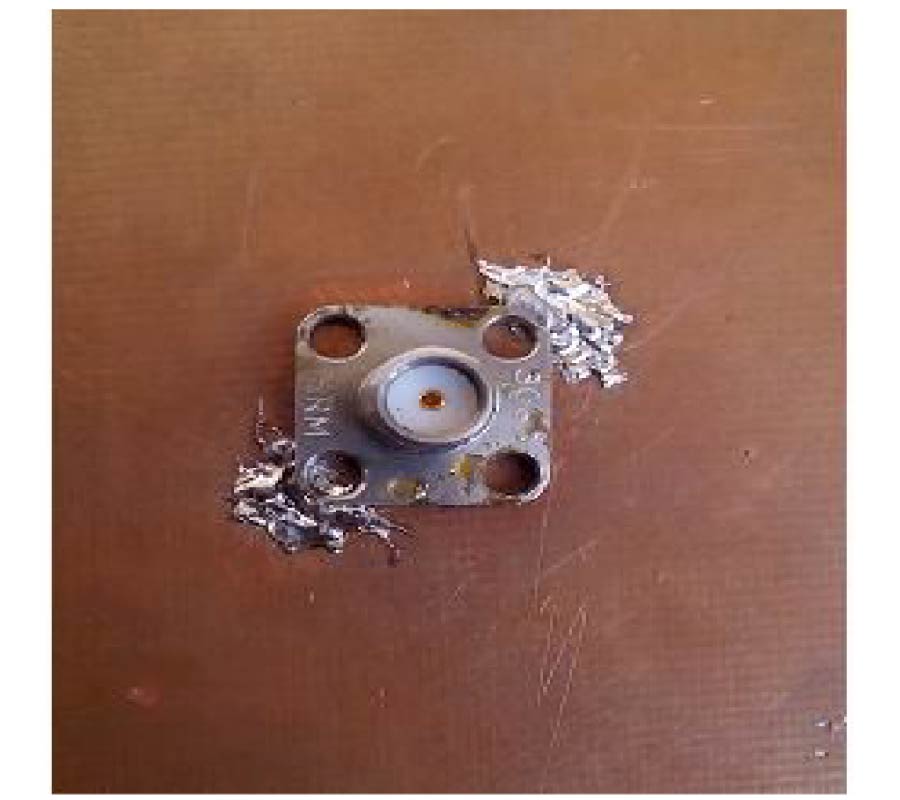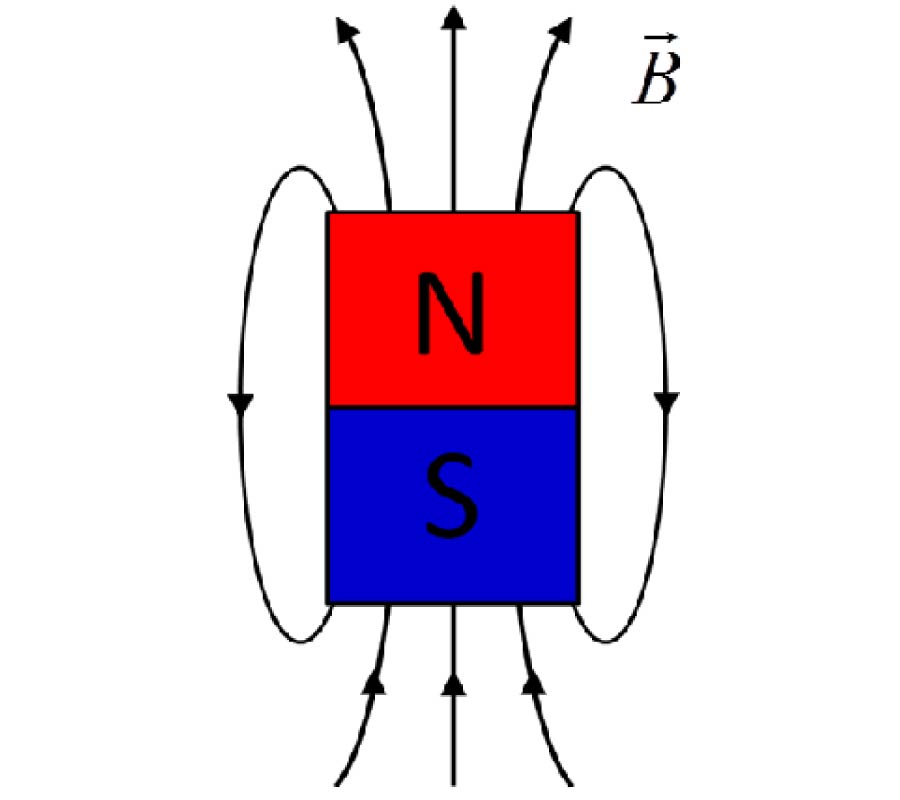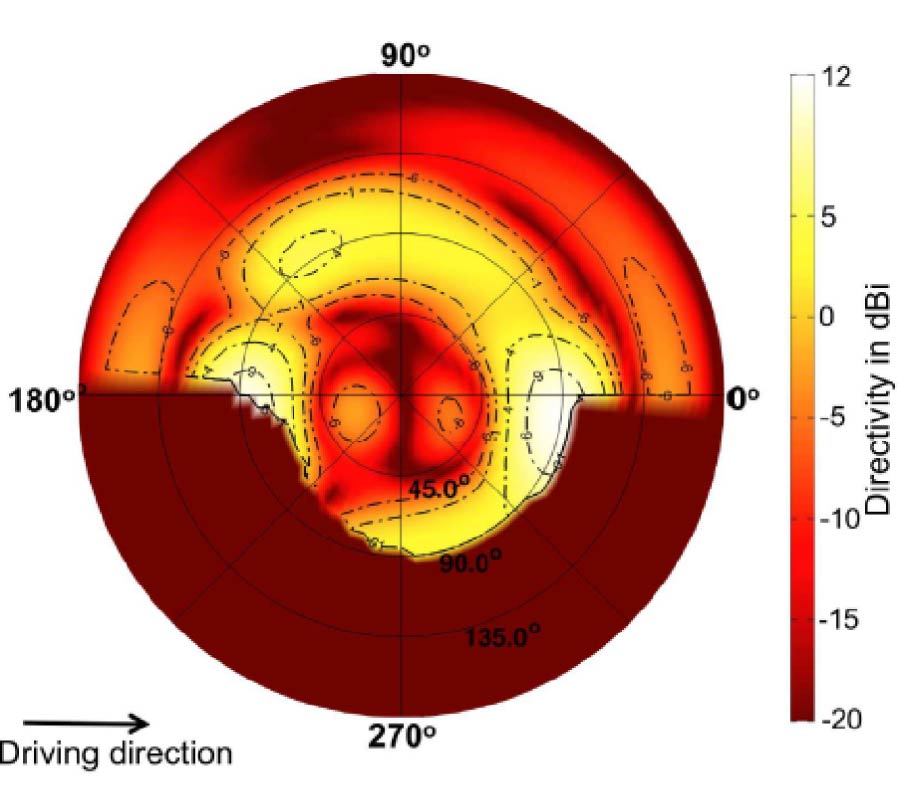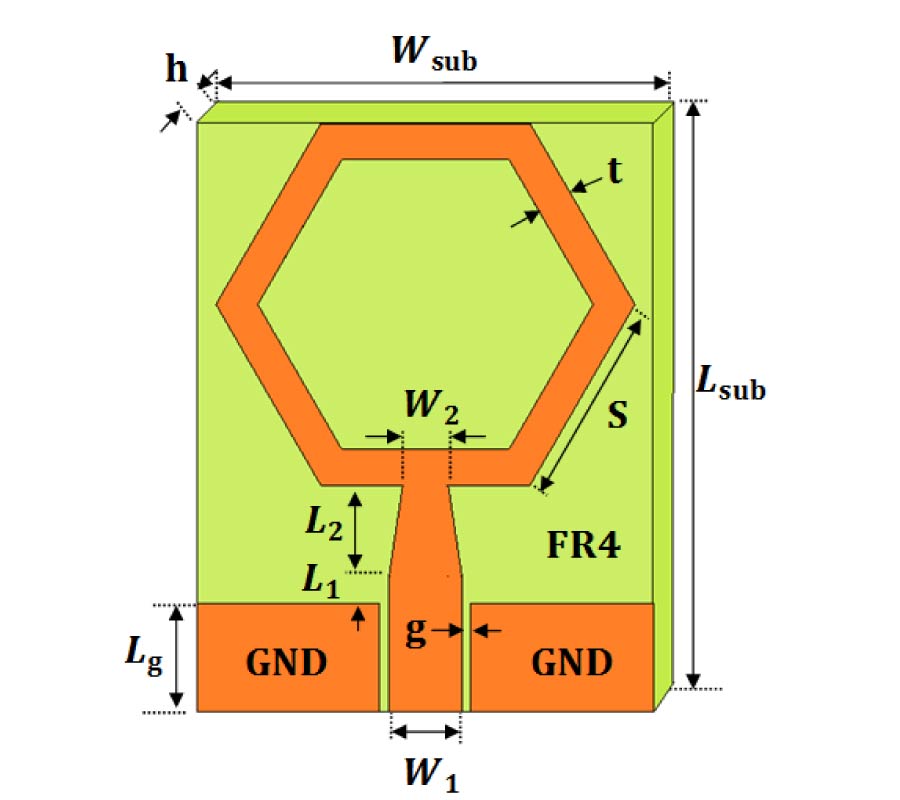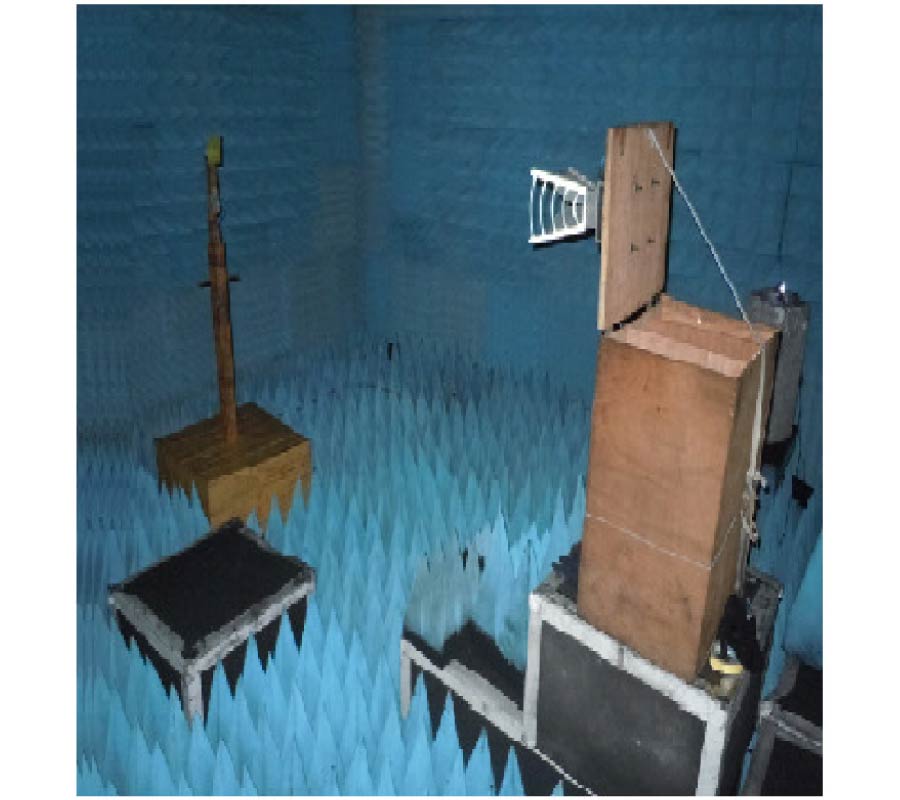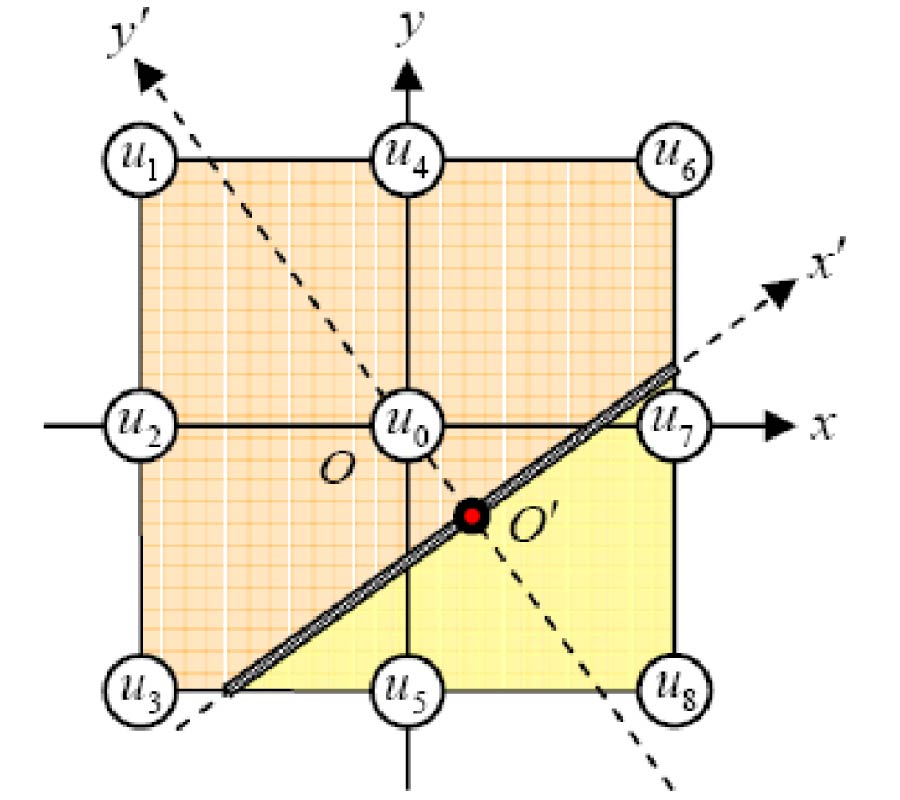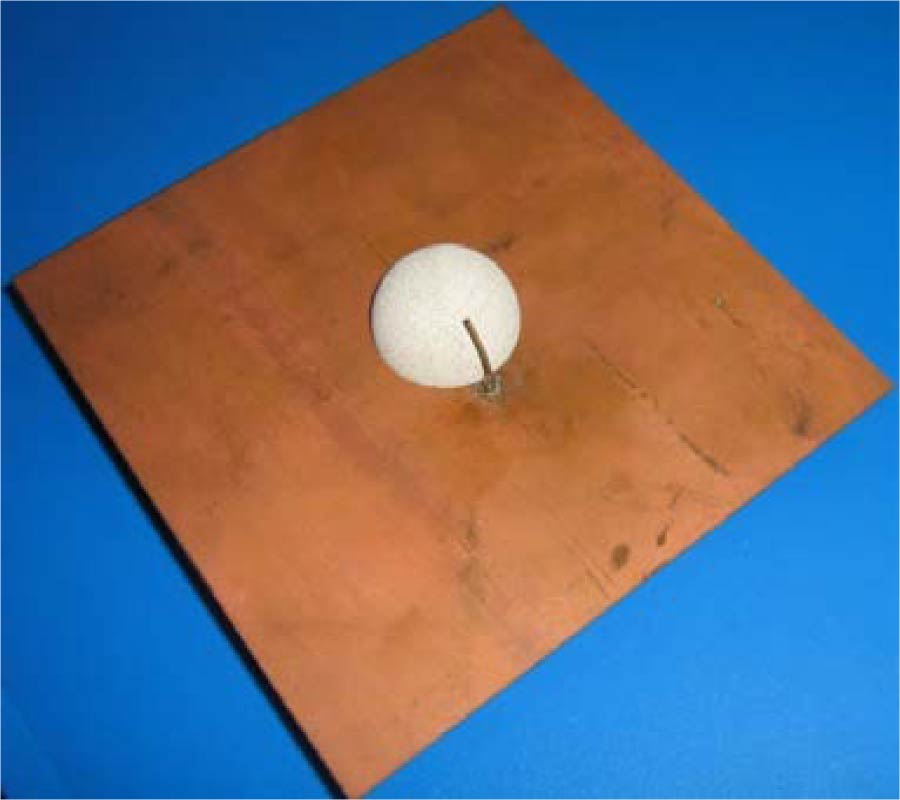A Frequency Band Reconfigurable UWB Antenna for High Gain Applications
Ritesh Kumar Saraswat and
Mithilesh Kumar
An octagonal shape patch antenna with switchable inverted L-shaped slotted ground is designed for frequency band reconfigurable and experimentally validated. The antenna is capable of frequency band switching at five different states including an ultra wideband (UWB) state, two narrowband states and a dual-band state by using RF switching element p-i-n diodes. In the case of ultrawide band (UWB) state, the proposed antenna operates over impedance bandwidth of 141% (2.87-16.56 GHz) under simulation and 139% (2.85-15.85 GHz) in measurement with return loss S11 < -10 dB. For two narrowband states, 10 dB impedance bandwidth achieved is 16% (5.05-5.91 GHz) and 11% (8.76-9.80 GHz) under simulation and 14% (5.01-5.79 GHz) and 10% (8.68-9.69 GHz) in measurement, respectively. For the dual band state, 10 dB impedance bandwidth of 2.21-2.52 GHz (13%) & 5.07-5.89 GHz (15%) and 2.18-2.52 GHz (14%) & 8.78-9.71 GHz (10%) under simulation and 2.20-2.50 GHz (12%) & 5.05-5.90 GHz (15%) and 2.19-2.50 GHz (13%) & 8.70-9.60 GHz (9%) in measurement with return loss S11 < -10 dB. The proposed antenna is capable to serve in different wireless communication applications such as WLAN [802.11b/g/n (2.4-2.48 GHz), 802.11a/h/j/n (5.2 GHz), ISM band (2.4-2.5 GHz)], Bluetooth (2400-2484 MHz), WiMAX (2.3-2.4 & 5.15-5.85 GHz), WiFi (2.40-2.48, 5.15-5.85 GHz) and UWB (3.1-10.6 GHz). It also works at 9.2 GHz where airborne radar applications are found. Next, the antenna gain is improved with the help of a circular loop frequency selective surface (FSS) and a PEC (perfect electric conductor) sheet. Measured peak gain represents average improvements about 4 dB-5 dB over the UWB band. Experimental results seem in good agreement with the simulated ones of the proposed antenna with and without the frequency selective surface.
